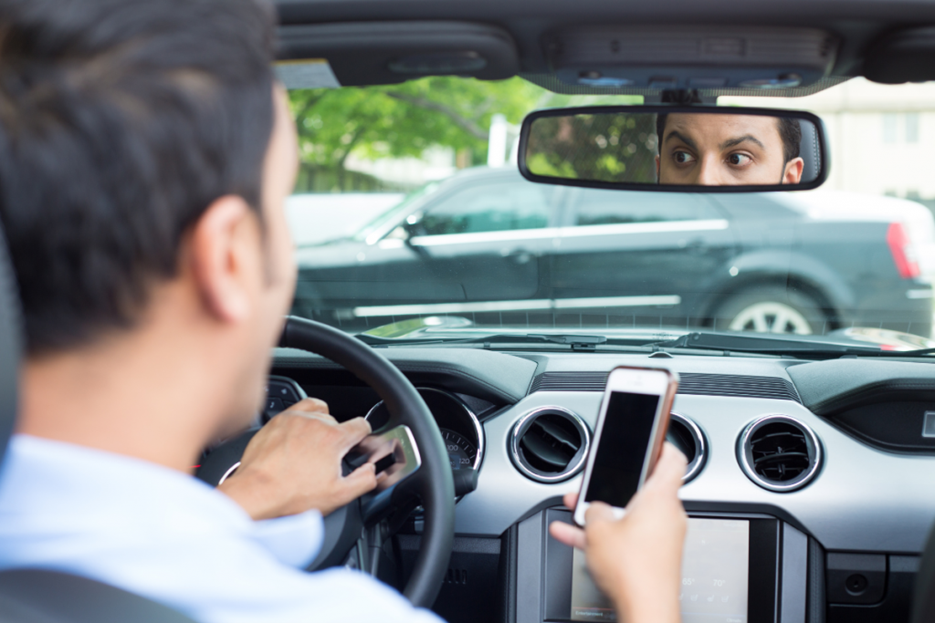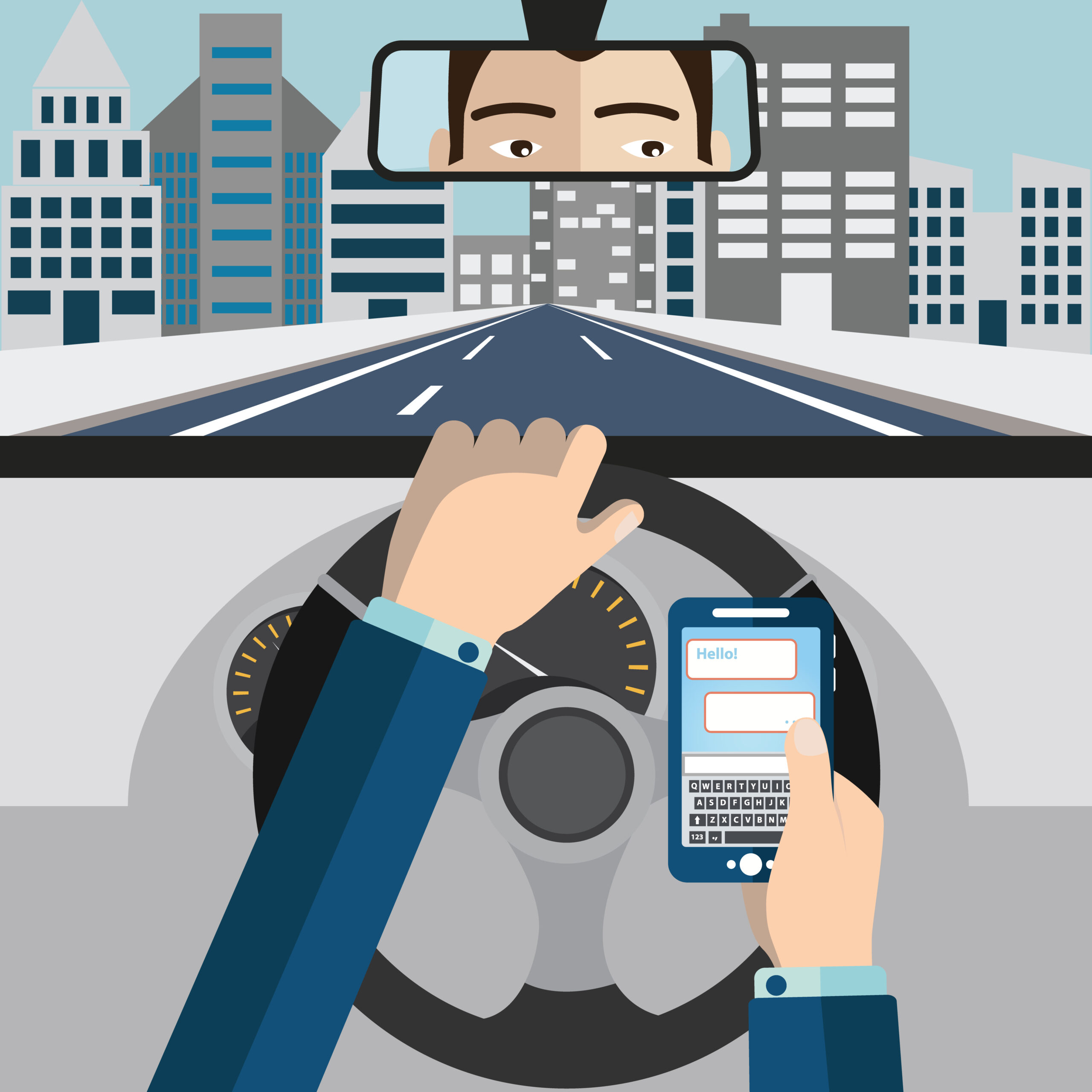Smartphones and Car Accidents: How They Are Related
- 1 How Are Smartphones and Car Accidents Related?
- 2 Different Cases of Smartphones and Car Accidents:
- 3 Facts About Car Accidents
- 3.1 Distracted Driving Statistics:
- 3.2 Pedestrian Accidents:
- 3.3 Emergency Room Visits:
- 3.4 Legislation and Enforcement:
- 4 Avoiding these accidents:
- 4.1 Hands-Free Options Aren’t Risk-Free:
- 4.2 Pull Over for Urgent Matters:
- 4.3 Use Driving Modes:
- 4.4 Educate and Advocate:
- 5 Conclusion
In the age of technology, smartphones have become an indispensable part of our daily lives. The intersection between these handheld devices and road safety has become a critical concern. The alarming rise in car accidents associated with smartphone use has prompted a closer look at how these gadgets contribute to distracted driving.
The connection between smartphones and car accidents is stark, with statistics painting a concerning picture. 14% of all fatal car crashes involve the improper use of a cell phone while driving, emphasizing the deadly consequences of distracted driving.
Victims of car accidents should reach out to reputable attorneys, like Rosenberg & Gluck, L.L.P. car crash attorneys, to get the help they need to tackle compensation claims. The compensation victims receive from such claims will be instrumental in getting back to their old lives.
How Are Smartphones and Car Accidents Related?
Nearly 390,000 injuries occur each year due to accidents caused by texting while driving, making it a pervasive and hazardous behavior on the roads. At any given time in a day, roughly 660,000 drivers are trying to use their phones and operate a vehicle, creating a constant and widespread risk. A significant number of people lose their lives in motor vehicle crashes involving distracted drivers.
Different Cases of Smartphones and Car Accidents:
Two cases of car accidents involving smartphones are on the rise. They are:
Texting While Driving:
Texting while driving is a typical and dangerous behavior that diverts attention from the road. Composing or reading a text message takes the driver’s attention off the road for an average of 5 seconds, which is equal to driving the length of a football field at 55 mph.
To avoid this, drivers must prioritize their attention on the road. Shockingly, texting while driving is six times more likely to cause an accident than driving under the influence, underscoring the severity of the issue.
Talking on the Phone
Even with hands-free devices, engaging in phone conversations can still contribute to distracted driving. The mental focus required for the exchange diverts attention away from the road.
Drivers should limit phone conversations while driving, especially in challenging conditions.
Statistics highlight that cell phone use or texting while moving was a factor in a notable percentage of distracted driving accidents resulting in fatalities.
Facts About Car Accidents
Distracted Driving Statistics:
- Fatalities: According to the National Highway Traffic Safety Administration (NHTSA), distracted driving claimed 3,142 lives in the United States in 2019. This marked a 10% increase from the previous year, highlighting the growing impact of distracted driving on road safety.
- Cell Phone Use: A significant portion of distracted driving incidents involves cell phone use. The NHTSA reported that at any given daylight moment across the country, approximately 660,000 drivers are using cell phones or manipulating electronic devices while driving.
- Texting and Driving: Texting while driving remains a pervasive issue. Sending or reading a text takes a driver’s eyes off the road for an average of five seconds, which, at 55 mph, is equivalent to driving the length of a football field blindfolded.
Also Read – Recent Changes In Car Accident Law You Should Know
Pedestrian Accidents:
- Injuries: A study published in the journal “Injury Prevention” revealed a troubling trend in pedestrian injuries related to cell phone use. Between 2005 and 2010, the number of injuries doubled, with researchers citing distractions caused by texting or talking on the phone while walking.
- Age Demographics: The study also found that young adults aged 16 to 25 were the most vulnerable group, constituting a significant portion of pedestrians injured due to cell phone distractions.
Emergency Room Visits:
- Orthopedic Injuries: The American Academy of Orthopaedic Surgeons reported a notable increase in orthopedic injuries related to distracted walking. Emergency rooms across the country are witnessing a rise in fractures, sprains, and dislocations resulting from pedestrians not paying attention to their surroundings due to cell phone use.
- Severity of Injuries: The injuries sustained in cell phone-related accidents vary in severity, ranging from minor cuts and bruises to more critical conditions requiring immediate medical attention.
Legislation and Enforcement:
- State Laws: As of 2023, all 50 states and the District of Columbia have enacted laws addressing distracted driving. Penalties vary by state, including fines, license points, and in some cases, even imprisonment for repeat offenders.
- Enforcement Challenges: Despite legislative efforts, enforcement remains a challenge. The widespread use of smartphones and the difficulty of monitoring drivers and pedestrians contribute to the continued prevalence of cell phone-related accidents.
Avoiding these accidents:
Hands-Free Options Aren’t Risk-Free:
While hands-free options may seem safer, they still contribute to distracted driving. The mental engagement in a conversation diverts attention, impacting reaction times and overall driving performance.
Pull Over for Urgent Matters:
If a call or text is urgent, it’s safer to pull over to the side of the road. Safety should always take precedence over convenience regarding phone use while driving.
Use Driving Modes:
Many smartphones offer driving modes that limit notifications and calls while driving. Activating these modes can reduce distractions and enhance focus on the road.
Educate and Advocate:
Public awareness campaigns play a vital role in changing behavior. Advocating for responsible smartphone use while driving and educating others about the risks can contribute to a safer driving culture.
Conclusion
The intertwining of smartphones and car accidents is a pressing issue that demands collective attention and action. The statistics paint a sobering picture of the consequences associated with distracted driving. Whether texting, talking, or using apps, the impact on road safety is undeniable.
By understanding the gravity of the issue, adopting safer habits, and advocating for responsible smartphone use, we can contribute to a culture where the roads are safer for everyone. The road ahead should be navigated with attention, responsibility, and a commitment to minimizing distractions, ensuring that the connection between smartphones and car accidents becomes a thing of the past.



















